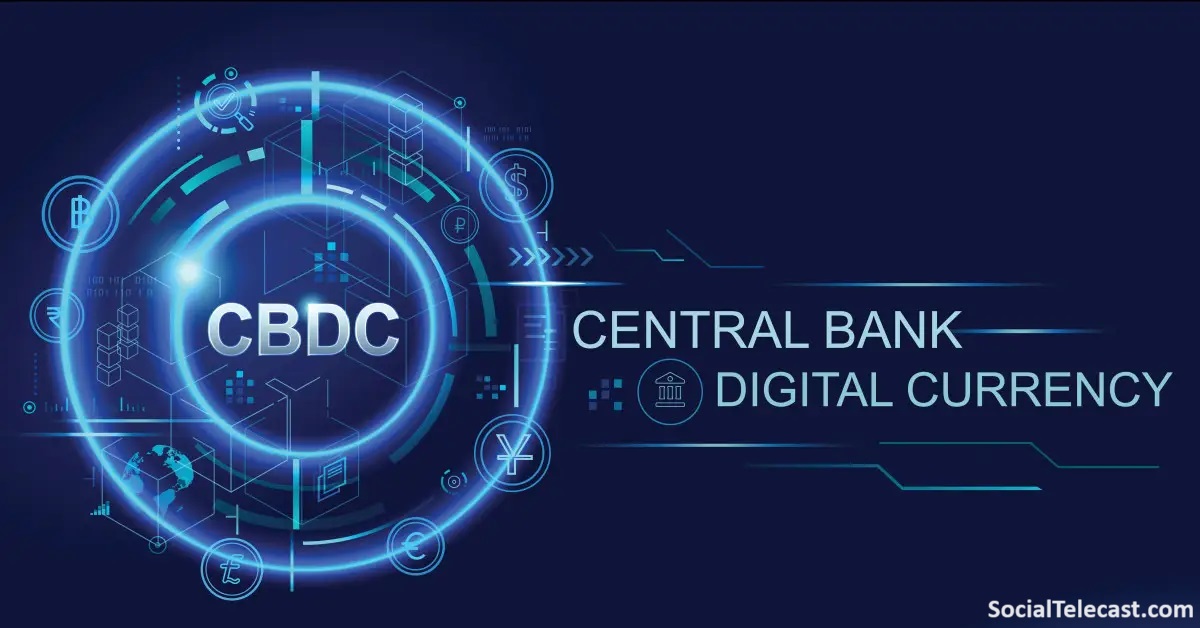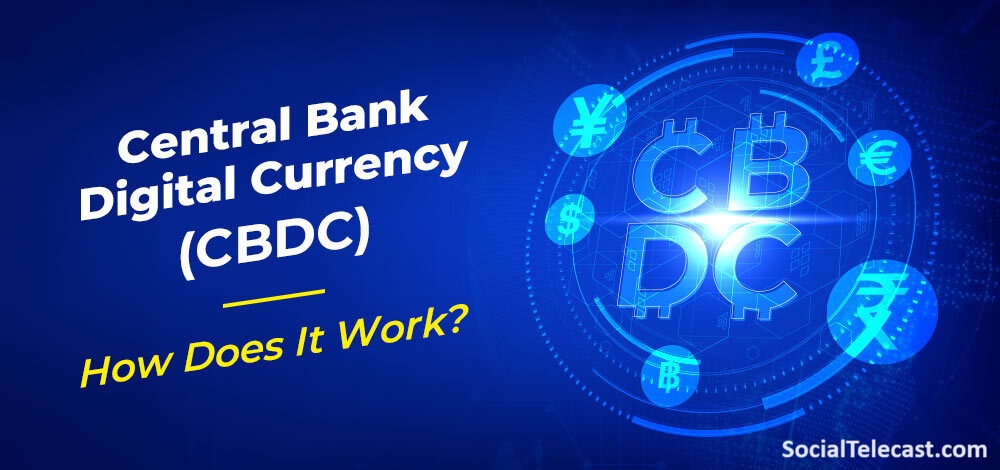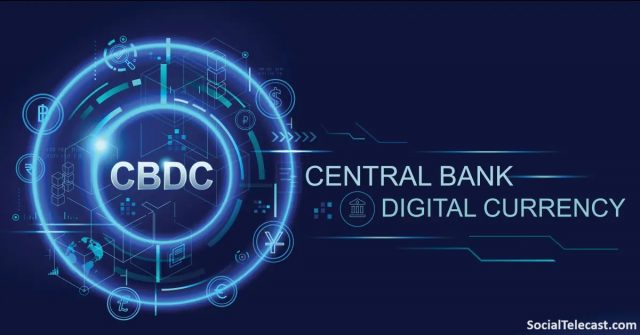In this article, we are going to cover some topics related to Central Bank Digital Currency and this article will be beneficial for those who want to know more related to CBCD. Yes, it is also known as CBCD stands for Central Bank Digital Currency. It is a digital version of a country’s national currency, and it is issued and regulated by the central bank. Some people believe that CBDCs and cryptocurrencies are the same but it is false. But it is not completely false, CBDCs are similar to cryptocurrencies, except that their value is fixed by the central bank and equivalent to the country’s fiat currency. Here, we are going to share a brief guide to CBCDs and we will try to cover every single piece of information related to this topic.

What Is a Central Bank Digital Currency
Central Bank digital currencies are the digital currency issued by the central bank of a country and it is similar to cryptocurrencies but designed for stability and safety. It can improve payment systems and financial inclusion, and could also promote diversity in payment options, make cross-border payments faster and cheaper, increase financial inclusion, and possibly facilitate fiscal transfers in times of economic crisis. Central Bank digital currency aims to take the benefits of blockchain-based digital currency and combine it with fiat currency under the control of the central bank. It has several objectives including privacy, transferability, convenience, accessibility, financial security, reducing maintenance costs for a complex financial system, reducing cross-border transaction costs, and protecting the privacy of users. Central banks have begun exploring the concept of central bank-issued digital currencies with cryptocurrencies highlighting the inefficiencies of traditional payment systems.
A central bank digital currency (CBDC) is a blockchain-based digital version of fiat currency and is essentially a blockchain-powered version of a country’s national currency. These are issued and managed by the central bank of a country. CBDCs are automatically considered legal tender and can be used for payments. The primary idea behind a CBDC is to offer a government-sanctioned digital payment system that addresses payment inefficiencies within a country.

We have already talked about how CBCD is different from Cryptocurrency but still, there is some confusion among people. So, let’s talk about how CBCD is different than cryptocurrency. CBCDs only draw inspiration from cryptocurrencies, but they are significantly different from them and cryptocurrencies are the key feature in the decentralized aspect. Decentralized digital currencies such as Bitcoin are borderless, permissionless, and censorship-resistant. Peer-to-peer transactions take place on public blockchains, and no one can tell a user what they can or can’t do with their digital money. For CBDCs, the central bank controls the digital currency and oversees transactions, potentially allowing it to take actions such as freezing funds, blacklisting digital wallet addresses, and directly incentivizing individuals to spend their money (as opposed to saving it), especially if the CBDC is programmable.
There are many types of CBCDs but two are considered as the main types of CBCDs: wholesale and retail. Wholesale CBCDs target financial institutions, which can utilize them for inter-bank transactions. It is for financial institutions. On the other side, retail CBCDs are the public for everyday transactions and it is for the intended users. For example: buying goods and services and sending money. Ideally, retail CBDCs will complement traditional bank accounts and cash. However, it is still too early in the concept and implementation stage to determine the impact on traditional financial systems.
CBCDs also include opportunities and risks that can potentially change the financial landscape.
Opportunities of CBCDs
- Reduced loan loss reserves: It reduces the loan loss reserves.
- Establish a direct line between citizens and the government itself
- More efficient and secure payments: It refers to a process of payment that ensures the protection of the user’s financial and personal information from fraud and unauthorized access.
- Increase financial inclusion: It refers to the increase of financial inclusion.
- Eliminate the risk of a commercial bank collapse: It is a process of identifying, evaluating, and taking steps to mitigate the chance of something bad happening.
- Reduce risks: Help to reduce leverage and asset risks. It increases the return on equity, improving investors’ return on capital invested.
- Expanded lending: It is safe capital used to increase assets through internal or external means.
- Increased asset quality: It is a measure of the credit risk associated with an asset such as a loan, and is an important factor in determining the financial stability of a bank.
Also read: What Is Bitcoin Cash: How Does BCH Work?
Also read: What Is Ethereum: How Does ETH Work?
Risks of CBCDs
- Central banks have complete control: Central banks surveillance all the processes and control their money supply.
- Less privacy for users: It is a lack of privacy and people feel isolated and less trusting of others, which can lead to a breakdown in relationships.
- Difficult to attain widespread adoption: Sometimes, it happens that new innovations may not be compatible with existing systems and structures, which can make it difficult for organizations to adopt them.
- Conservative-minded and liberty-loving citizens will have an instinctively hostile reaction against CBDCs.
- Cybersecurity: It is the practice of protecting systems, networks, and programs from cyberattacks.
- The threat of Centralized Control led to some disadvantages including Bureaucratic leadership, Remote control, delays and.
- Privacy risks: It refers to the chance that people will experience problems due to data processing.
- Reduced transparency for regulators: It happens when the number of technical requirements increases and it makes the law harder to access, making materials difficult and expensive to obtain.
Also read: What is NEM Crypto: Future And More Explained
Also read: What is EOS: Is EOS A Good Investment?
Conclusion
A major issue with traditional finance is the control that third parties such as banks have over transactions. A CBDC would take further control and give the government direct access to everyone’s financial information. Furthermore, if the CBDC is programmable, it would allow the government to actively encourage or discourage certain behaviors of its population. For example, if the government wants to actively discourage consumption, it may prevent citizens from purchasing things like alcohol or cigarettes. There is potential for abuse of such access and control. In a world where people decry the loss of privacy from government intrusion and surveillance, CBDCs will only serve to exacerbate the problem. Above in this article, we have shared all the details about the Central Bank Digital Currency and also covered some more details related to this topic. Keep following our site to get more articles related to these kinds of topics.







